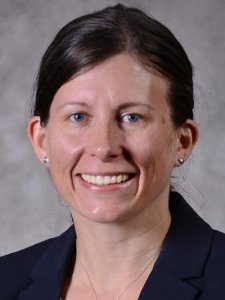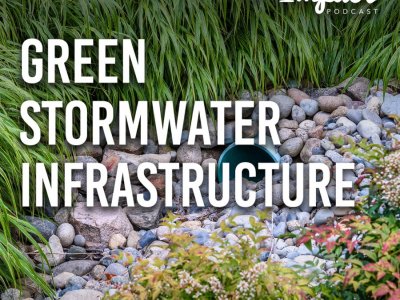A lot of our lives is impacted by the air we breathe, both inside and outside. And where we live is an important factor in this equation. For those living in the Pittsburgh area, it is likely that they could be impacted by poor air quality related to large industrial sites that dot the western Pennsylvania landscape. To better understand the air quality concerns of this region and how it's impacted by complex terrain, a team of interdisciplinary researchers is working closely with communities and organizations in the region to explore what concerns exist and how they might be addressed.
Transcript
INTRO: When the Shell plant opens, it's estimated to be the largest emitter of volatile organic compounds in western Pennsylvania and the second largest emitter of VOCs, as they're commonly called, in the whole state. So communities are really, really concerned about how this will impact the region's already poor air quality.
HOST: Welcome to Growing Impact, a podcast by the Institutes of Energy and the Environment at Penn State. Growing Impact explores cutting-edge projects of researchers and scientists who are solving some of the world’s most challenging energy and environmental issues. Each project has been funded through an innovative seed grant program that is facilitated through IEE. I’m your host, Kevin Sliman.
HOST: Pittsburgh, Pennsylvania has some of the worst air quality in the nation. This is due to multiple factors, including industrial polluters that call Pittsburgh home and a complex terrain of ridges and valleys where pollutants can get trapped. On this episode of Growing Impact, I speak with an interdisciplinary team of researchers that's investigating air quality challenges in western Pennsylvania. Through air quality measurements, computer modeling, and dialogue with the public and local organizations, the team seeks to understand the needs of communities in the Pittsburgh area. Three of the team members, Natasha Miles, Jenn Baka, and Lisa Iulo, were able to join me for a conversation about their project. I had them introduce themselves.
Natasha Miles (NM): My name is Natasha Miles. I'm an associate research professor in the Department of Meteorology and Atmospheric Science. And my research focus is the atmospheric boundary layer and greenhouse gas emissions primarily.
Jenn Baka (JK): I'm Jenn Baka. I'm an associate professor of geography and also an associate of the EESI (Earth and Environmental Systems Institute) here at Penn State. I'm an energy geographer, and I look at how energy developments impact community well-being and policy processes.
Lisa Iulo (LI): Lisa Iulo. I'm an associate professor of architecture and the director of the Hamer Center for Community Design. And my research broadly is in fostering collaborations and cross-disciplinary education for sustainable and resilient communities.
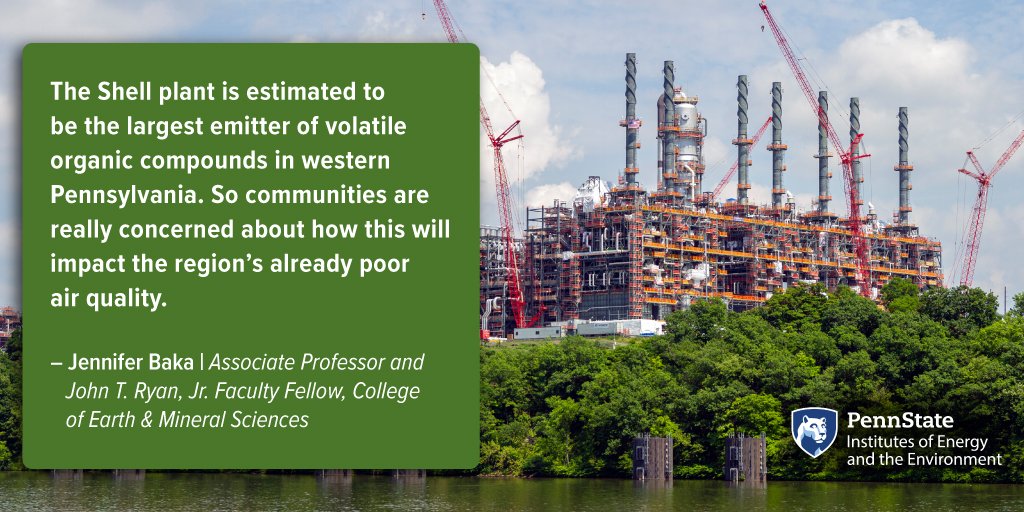
HOST: I just want to welcome all three of you to Growing Impact. This is gonna be a great conversation. Your project is focusing on large industrial sites in relation to health concerns for nearby communities. Can you provide background and context for the project?
NM: The Pittsburgh area has some of the worst air quality in the nation. And it also has complex terrain, which makes it difficult to model the meteorology and the area. If the models are inaccurate, they may not account for extreme concentrations of pollutants that can be found, especially in valleys and stable conditions that typically occur during night or when it's cold. Pittsburgh is also home to a number of industrial sites, including the US Steel's Clairton Coke works, and also the Shell Pennsylvania Petrochemical Complex. The Shell Pennsylvania Petrochemical Complex is going to be opening soon, and there are concerns that will further worsen air quality concerns in the area. So the goal of this project is to identify community needs and determine what research is needed. And specifically, our group in meteorology and atmospheric science has in the last several years focused on determining emissions of greenhouse gases, CO2 and methane, using a top-down approach. And we'd like to use a similar approach for air toxins, things that potentially have health effects. So far in the Pittsburgh area, we're focusing on using existing measurements of fine-scale particulate matter, usually abbreviated PM2.5, since it's less than 2.5 micrometers in diameter. And those really small particles that are of particular concern because they get deeper into your lungs.
Atmospheric Boundary Layer
JB: Yeah, this was more of an exploratory seed grant. We wanted to go in and talk to communities to understand their concerns about the regions air quality in both indoor and outdoor. So we wanted to do community-led research to identify particular gaps in knowledge and then design a future research project that best helps community needs. So when we were assembling the team, we wanted people who have experience doing community engagement but then also research on indoor and outdoor environments. And I think that the indoor environment, and Lisa can speak more to this, as you know, something that's really novel here, because from what I understand in doing some of the initial lit review for this, there's very limited research on indoor air quality and those links to public health.
HOST: How did you come to focus on Pittsburgh and the Shell Pennsylvania Petrochemical Complex and US Steel's Clairton Coke Works?
JB: That one's a little straightforward. Those are two of the largest polluting facilities in the region. So there was almost a no-brainer to just try to focus around those two facilities and understand community concerns. And just for a little perspective, when the Shell plant opens, it's estimated to be the largest emitter of volatile organic compounds in western Pennsylvania and the second largest emitter of VOCs, as they're commonly called, in the whole state. So communities are really, really concerned about how this will impact the region's already poor air quality.
HOST: So you've already indicated this is to learn about community concerns and finding gaps in knowledge. So the project has really strong ties to community engagement, including working with community representatives and local experts. Can you discuss the thought behind this and provide updates as to how the process has been going?
JB: Working with one of my graduate students over the last academic year, we conducted some community interviews with—we were successful in getting interviews with seven community leaders—just to do a broad interview to understand their concerns about the region's air quality, both indoor and outdoor contexts. People did feel more comfortable speaking on the outdoor quality because I think that's studied a bit more. And then we're using that data to inform more of the modeling analysis and future project work.
LI: And to elaborate on that a little bit, our engagement is helping us to refine existing questions that we had going into this research, but also to identify new questions related to data on air quality. Because of the collaborative and interdisciplinary nature of the project, we're able to respond to research needs that are identified through the engagement and gain feedback on research findings and future needs and activities. So for example, we've been working with the Breathe Project in Pittsburgh and our partner in this research, Dr. Matt Mehalik, introduced us to the team at ROCIS Pittsburgh, which stands for Reducing Outdoor Contaminants in Indoor Spaces. This group has been collecting data on indoor and outdoor air quality in and around Pittsburgh. And they've helped us to validate research questions and are providing invaluable existing data to our team for the research that we're doing.
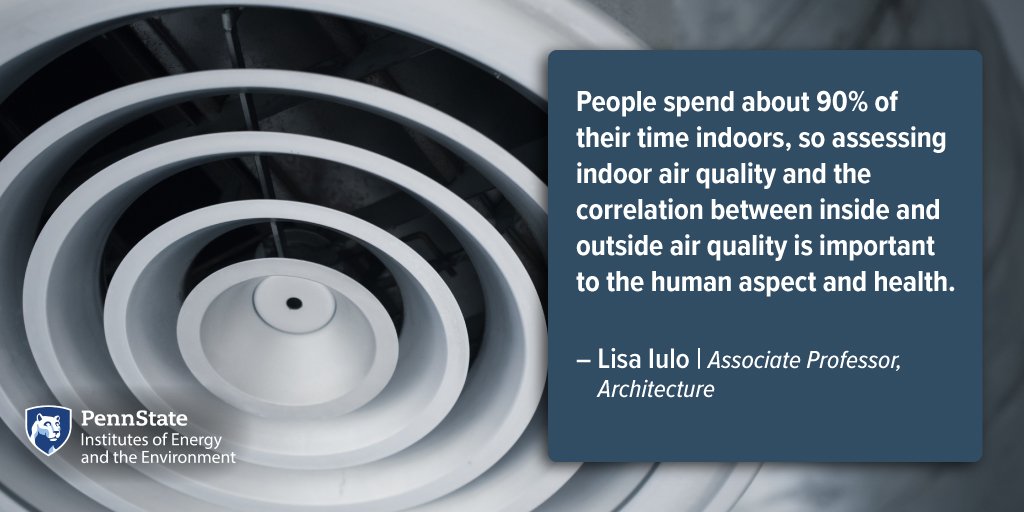
HOST: In addition to community input, your team is utilizing technology to provide data about air quality. What steps are you taking to better understand the current conditions and even possibly the future ones?
NM: So far, our group in Meteorology has focused our work on the seed grant on the analysis of PM2.5. And there's a network of relatively new, fairly low-cost sensors that can be purchased and deployed by individuals. And this has increased the number of measurement sites for PM2.5 to over 100 in the Pittsburgh area. Compared to the official EPA sensors, there's only seven in the area. So a dramatic increase. The concentrations of PM2.5, as well as other air pollutants and greenhouse gases too, changes dramatically with the time of day as atmospheric stability changes in the mixing height and the atmosphere change. So we've been analyzing daily patterns of PM2.5 and changes in PM2.5 with elevation. The lower areas tend to have the higher concentrations of air pollutants, particularly at night.
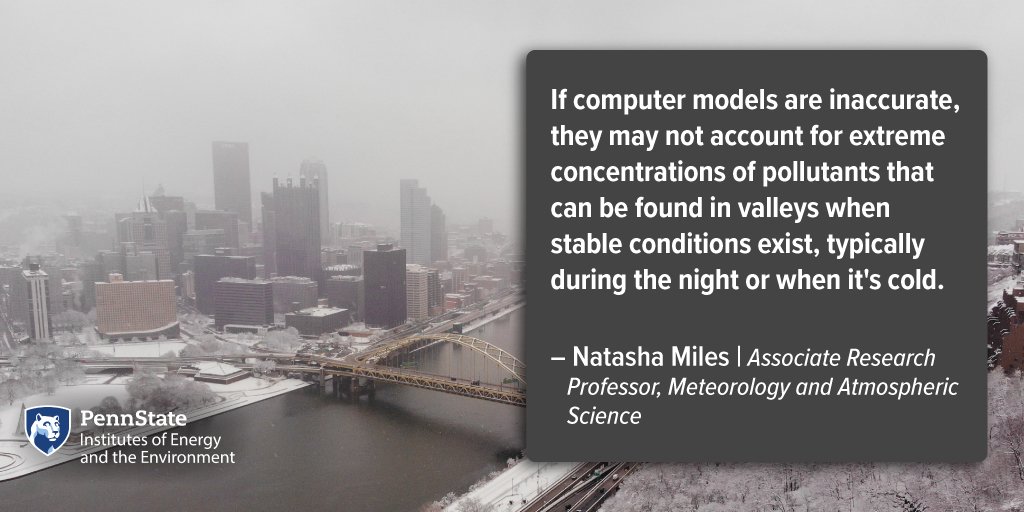
LI: This focus on the low atmosphere air is, I think, really important. As Tasha pointed out, we've got accumulation of particulates in that air and the combination of the topography of Pittsburgh with the conditions that Tasha's already elaborated on, means that that low atmospheric air can be more polluted. And this is problematic in buildings because we rely on intake air from the outside in our buildings, for ventilation in our homes, etc, to provide necessary fresh air. So these outdoor pollutants, when we bring them inside, can actually concentrate. And then they're exacerbated by pollutants that originate inside. And because people spend about 90% of their time indoors, this is really important to our work. So assessing indoor air quality and the correlation between inside and outside air quality is important to the human aspect and health.
HOST: One of the goals of the project is to determine if current and planned air quality measurements and modeling are sufficient. How do you plan to assess something like that?
NM: Well, we have found that for the case of the PM2.5 measurements, the locations of the measurements are clustered around the known industrial point-sources in the area. And we would get a more complete picture of the PM2.5 concentrations if we could add a more even distribution of the measurements. We have found that there doesn't seem to be a correlation between the housing price and the presence of the PM2.5 measurements. When we talked to the ROCIS group, they had worked with folks in the communities to try to balance that out and make sure that even the low-income houses had some representation there.
In terms of the modeling, we do have a follow-on project that's been funded by NASA and it's led by Ken Davis. And it's going to address state implementation plans for California and Pennsylvania. A state implementation plan, that just means it's a state's plan to reduce pollution to the EPA limits for the area. And the idea is that the state simulates the meteorology for that region. It adds in an estimated pollutant emissions and air chemistry to simulate the pollution levels. Then it experiments with emissions reductions in the model, things like regulations. Then it develops an emissions reduction plan that will put the region back into compliance. Of course, this means that the accurate simulation of the atmospheric boundary layer is central to this whole process. And it can be dramatically affected by the choice of land surface model, for example.
HOST: For those who are unfamiliar with what the atmospheric boundary layer is, could you define that for us?
NM: That's the lower layer of the atmosphere, which the depth to which the atmosphere mixes. It happens because there's a temperature gradient at a certain level. Usually like a typical level might be 1,000 m or 1 km. Pollutants or greenhouse gases or whatever, they all mix up to that level, especially during the day when there's a lot of mixing. And so if the boundary layer is high, you'll get a lower concentration, even for the same emissions that's happening at the surface, say. But if the boundary layer is low, you'll measure higher concentration, and the concentration is what's important.
HOST: So the boundary layer can actually fluctuate. Am I understanding that correctly?
NM: Yeah. Okay. So something like maybe 100 m at night and 1,000 m during the day.
JB: I'm learning here too, and it moves because of temperature.
NM: Yeah.
HOST: What are the factors of indoor air quality and why is it important to study indoor air quality specifically, and also indoor, outdoor environmental interactions?
LI: So factors of indoor air quality include gases and chemicals outside, but these could include materials in our homes, off-gassing, releasing chemicals or toxins, and also occupants of buildings exhaling, produce gases inside. Humidity and moisture accumulation, odors, radon, microbes and particles, and also pets and pests that might be in your house all contribute to factors of indoor air quality. And we rely on outdoor air to ventilate the spaces in the buildings including our homes, in order to dilute these contaminants. Once inside, those outdoor pollutants mix with the indoor pollutant sources such as cooking, candles, smoking, to create real potential for problems. In indoor air quality, we look at larger particulates in the air, what's known as pm10, such as dust that can irritate our eyes and nose and throat. But also the smaller particulates, the PM2.5 that as Tasha said, can go even deeper into your lungs and can even enter the bloodstream.
HOST: You've talked a lot about engaging with the community leadership within an area, policymakers and others. When you're talking about community engagement and making decisions and choosing the best paths forward. Who needs to be at the table when making decisions like this?
JB: You can answer this from a procedural justice perspective. You want to look at everybody who is impacted and everybody who influences and is impacted by something like air quality. So the polluters, the regulators, and then the people who live in the environments that might be polluted. When you're looking at a policy process through a procedural justice lens, you'll want to make sure that that entire supply chain, if you will, of individuals, have representation at the table. So in the type of work I do is I take that procedural justice lens and try to make sure that the communities that are most vulnerable to poor air quality, that they get a seat at the table.
HOST: How can this project improve people's lives?
JB: This project will really help to address some of the community concerns, not only about the air quality in the region, but also helping to build some bridges to better understand health impacts. So from my perspective, as an energy researcher, we're looking at contamination and outdoor environments, both air and water systems. There's a big gap on what I like to call the energy-health nexus. We're starting to fill it. But this type of project in which we're trying to get a better handle on what types of air pollution communities might be exposed to, that's going to serve us well down the road for collaborations with public health researchers so that we can then turn that into, "Okay, So what? We have these acute episodes of air pollution, but what are the health impacts of that?"
HOST: Can you talk about future plans for the project?
NM: Well, in addition to looking at the spatial correlation of the PM2.5 concentrations with housing price, we're also going to look at determining correlations with other potential predictors, things like income, traffic, the location of the point sources, and elevation. We have a follow-on project that was funded by the Department of Energy. It is called the Baltimore Social Environmental Collaborative Integrated Field Laboratory. And Ken Davis is the Penn State PI for the project. And the overall project is led by Benjamin Zaitchik at Johns Hopkins, and it's very much interdisciplinary. We have faculty members from 12 different departments here at Penn State involved. And it's going to address the issue of resiliency in the face of climate change for urban areas, focusing particularly on Baltimore.
HOST: I really appreciate all of you taking your time. Thank you. Tasha, Jenn, Lisa, thank you so much for being on with me and just learning about this. I appreciate it.
NM: Thanks a lot for having us, Kevin. It was good to talk to you.
JB: Thanks a lot, Kevin, it was really nice to have this chat.
LI: Thanks for the opportunity, a great conversation with you all and we invite the listeners to be in touch, if you have questions or are interested in the work that we're doing.
A note for listeners: At the time of this recording the Shell Ethane Cracker in Beaver County, Pennsylvania had not opened yet. By mid-November, the plant had opened. By mid December, The Pennsylvania Department of Environmental Protection issued a notice of violation against the company for going over its limit for volatile organic compounds.
This has been season 3, episode 5 of Growing Impact. To learn more about IEE and to hear previous episodes, read podcast transcripts, and to see related graphics from Growing Impact episodes, please visit iee.psu.edu/podcast. Thanks for listening.


